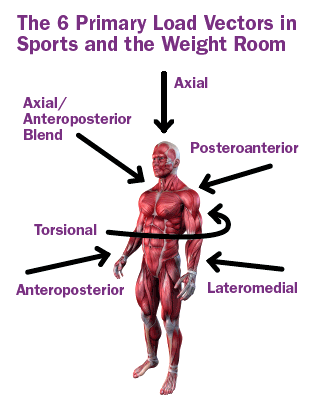Motion is Life. – Hippocrates
Motion is at the core of our development and remains an essential part of our well-being throughout life.
We often take the ability to move efficiently without pain for granted.
But when we lose the ability to move without pain, it is an awakening to just how miraculous the human machine really is. In movement, pain changes everything.
Movement patterns are affected by the subtle changes in behavior the body uses to compensate for the painful dysfunction. The nervous system innately goes into protective mode by adding stiffness and/or tightness to ensure sustained movement. Unfortunately, it does so at the cost of the normal biomechanical relationships between mobility and stability factors.
The art of human movement encompasses all angles, vectors, forces and directions. We can no longer use antiquated rehabilitation programs performed on linear-based equipment and expect the body to restore proper movement.
Human movement is a behavior, and it should be thought of in terms of behavioral patterns. To optimize patterning, we must integrate rehabilitation protocols using body-weight exercises aimed toward optimizing multi-joint movements in more challenging force vectors.
The majority of musculoskeletal pain syndromes, both acute and chronic, are the result of cumulative micro-trauma induced by repeated dysfunctional movements and positions. We can reduce the risk of injury by "teaching" the body to move more efficiently.
Suspension training principles comprised of more dynamic directional vectors, angles and forces is a highly effective strategy for accomplishing this goal.
What It Is
What is suspension training, and why care about directional vectors? Suspension training is characterized by one or more hands or feet supported by a single anchor point while the opposite end of the body is in contact with the ground. It uses your own body-weight as resistance and takes advantage of stability to load and unload exercises.
Directional Load Vectors
According to strength and conditioning specialist Bret Contreras, "Load vectors refer to the direction of force resistance relative to the human body. Since load vectors are relative to the body, one must consider both the position of the human and the direction of the resistance in order to determine the load vector."
 The diagram to the right depicts ways of illustrating the six primary load vectors in strength training rehabilitation.
The diagram to the right depicts ways of illustrating the six primary load vectors in strength training rehabilitation.
In the sagittal plane, there are three main types of load vectors: axial, anteroposterior, and a combination of axial and anteroposterior. In axial exercises, the direction of the resistance comes from top to bottom (or vice-versa) in reference to anatomical position. In anteroposterior exercises, the direction of the resistance comes from front to back (or vice versa) in reference to anatomical position. In axial/anteroposterior blend exercises, the direction of resistance is halfway between axial and anteroposterior at a 45 degree angle relative to the human body.
Body-weight axial exercises are usually performed when standing, while anteroposterior exercises are performed in the supine, quadruped or prone positions.
Most people perform solely single-vector body exercises and need to perform more multi-vector body exercises to maximize their recovery, athleticism and muscle activation. Suspension body-weight training can integrate all of these vectors to balance strength levels and prevent injuries.
Load vectors profoundly impact muscular activation during exercise. Muscles become stronger over time, enabling them to resist various loading patterns.
Suspension-training body-weight exercise is uniquely effective at enabling loading and unloading of movements to meet individual client needs. Remember, suspension training is distinguished from traditional exercises in that either the user's hands or feet are generally supported by a single anchor point, while the opposite end of the body is in contact with the ground. Therefore, the client is in total control of exercise ranges of motion, thus decreasing neuromuscular "guarding" mechanisms.
The versatility in manipulating load and stability is a functional training strategy that is critical in the treatment and prevention of musculoskeletal injuries and improving durability. One excellent example is the overhead squat with a suspension trainer.





